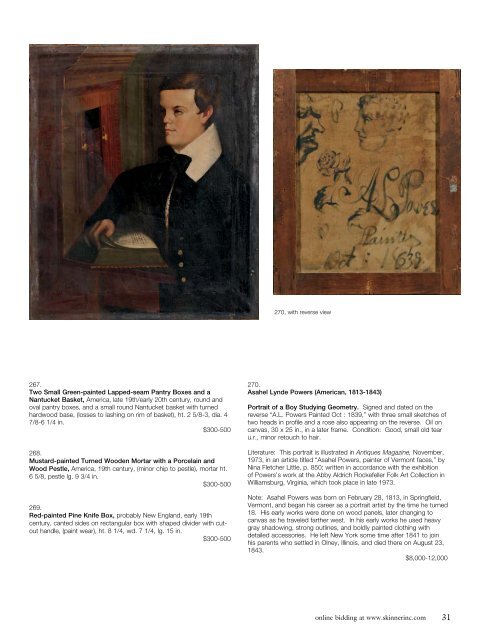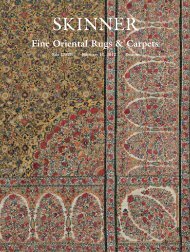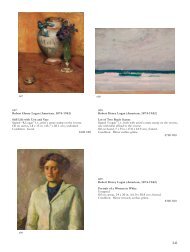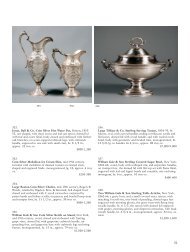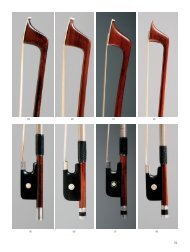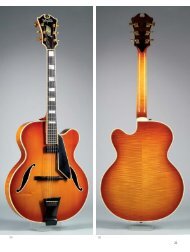SKINNER American Furniture & Decorative Arts
SKINNER American Furniture & Decorative Arts
SKINNER American Furniture & Decorative Arts
Create successful ePaper yourself
Turn your PDF publications into a flip-book with our unique Google optimized e-Paper software.
270, with reverse view<br />
267.<br />
Two Small Green-painted Lapped-seam Pantry Boxes and a<br />
Nantucket Basket, America, late 19th/early 20th century, round and<br />
oval pantry boxes, and a small round Nantucket basket with turned<br />
hardwood base, (losses to lashing on rim of basket), ht. 2 5/8-3, dia. 4<br />
7/8-6 1/4 in.<br />
$300-500<br />
268.<br />
Mustard-painted Turned Wooden Mortar with a Porcelain and<br />
Wood Pestle, America, 19th century, (minor chip to pestle), mortar ht.<br />
6 5/8, pestle lg. 9 3/4 in.<br />
$300-500<br />
269.<br />
Red-painted Pine Knife Box, probably New England, early 19th<br />
century, canted sides on rectangular box with shaped divider with cutout<br />
handle, (paint wear), ht. 8 1/4, wd. 7 1/4, lg. 15 in.<br />
$300-500<br />
270.<br />
Asahel Lynde Powers (<strong>American</strong>, 1813-1843)<br />
Portrait of a Boy Studying Geometry. Signed and dated on the<br />
reverse “A.L. Powers Painted Oct : 1839,” with three small sketches of<br />
two heads in profile and a rose also appearing on the reverse. Oil on<br />
canvas, 30 x 25 in., in a later frame. Condition: Good, small old tear<br />
u.r., minor retouch to hair.<br />
Literature: This portrait is illustrated in Antiques Magazine, November,<br />
1973, in an article titled “Asahel Powers, painter of Vermont faces,” by<br />
Nina Fletcher Little, p. 850; written in accordance with the exhibition<br />
of Powers’s work at the Abby Aldrich Rockefeller Folk Art Collection in<br />
Williamsburg, Virginia, which took place in late 1973.<br />
Note: Asahel Powers was born on February 28, 1813, in Springfield,<br />
Vermont, and began his career as a portrait artist by the time he turned<br />
18. His early works were done on wood panels, later changing to<br />
canvas as he traveled farther west. In his early works he used heavy<br />
gray shadowing, strong outlines, and boldly painted clothing with<br />
detailed accessories. He left New York some time after 1841 to join<br />
his parents who settled in Olney, Illinois, and died there on August 23,<br />
1843.<br />
$8,000-12,000<br />
online bidding at www.skinnerinc.com<br />
31


